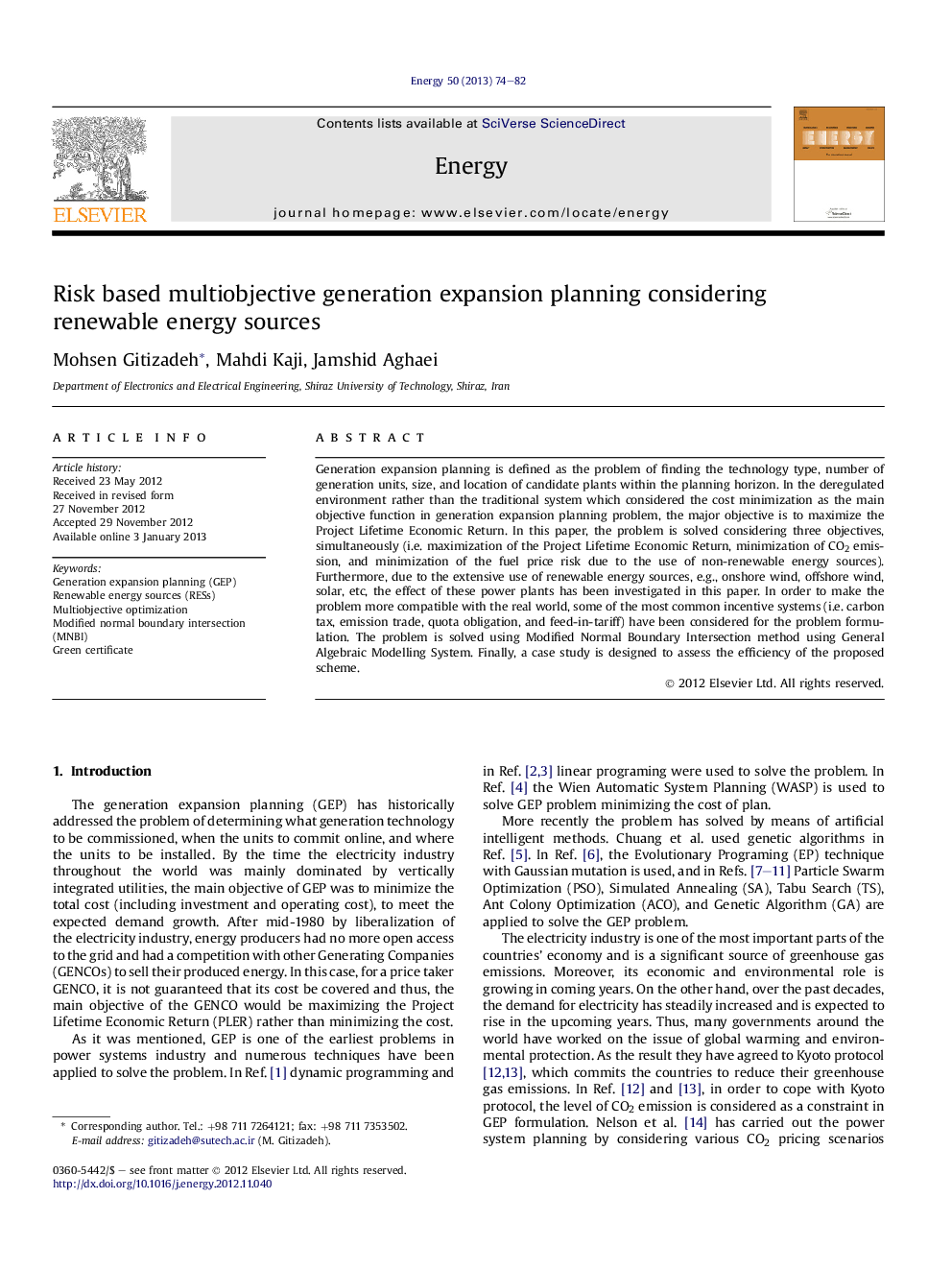| Article ID | Journal | Published Year | Pages | File Type |
|---|---|---|---|---|
| 1733218 | Energy | 2013 | 9 Pages |
Generation expansion planning is defined as the problem of finding the technology type, number of generation units, size, and location of candidate plants within the planning horizon. In the deregulated environment rather than the traditional system which considered the cost minimization as the main objective function in generation expansion planning problem, the major objective is to maximize the Project Lifetime Economic Return. In this paper, the problem is solved considering three objectives, simultaneously (i.e. maximization of the Project Lifetime Economic Return, minimization of CO2 emission, and minimization of the fuel price risk due to the use of non-renewable energy sources). Furthermore, due to the extensive use of renewable energy sources, e.g., onshore wind, offshore wind, solar, etc, the effect of these power plants has been investigated in this paper. In order to make the problem more compatible with the real world, some of the most common incentive systems (i.e. carbon tax, emission trade, quota obligation, and feed-in-tariff) have been considered for the problem formulation. The problem is solved using Modified Normal Boundary Intersection method using General Algebraic Modelling System. Finally, a case study is designed to assess the efficiency of the proposed scheme.
► Due to the extensive use of renewable energy sources, the effect of these sources has been investigated. ► The amount of Project Life-Time Economic Return is highly affected by using renewable energy sources. ► To make the problem more realistic, some incentive schemes have been considered for the GEP problem formulation. ► Renewable energy sources have helped the GENCO control its emission level and the risk.
